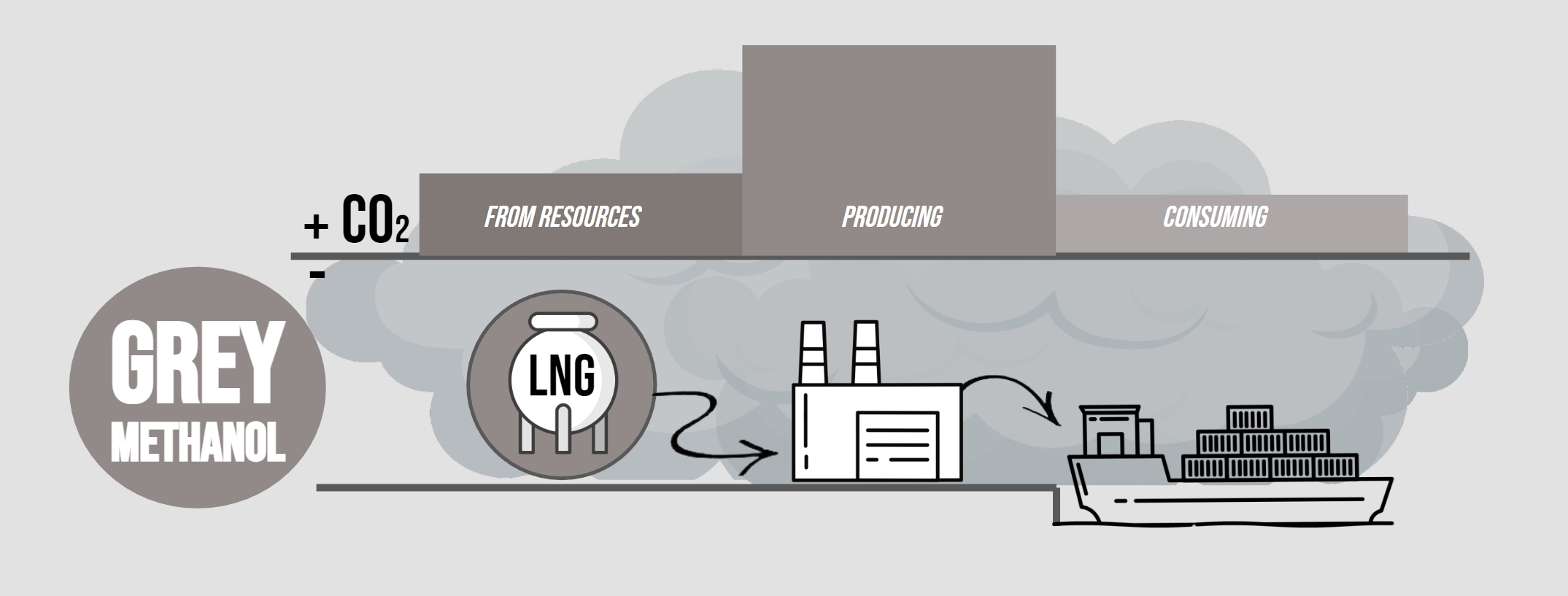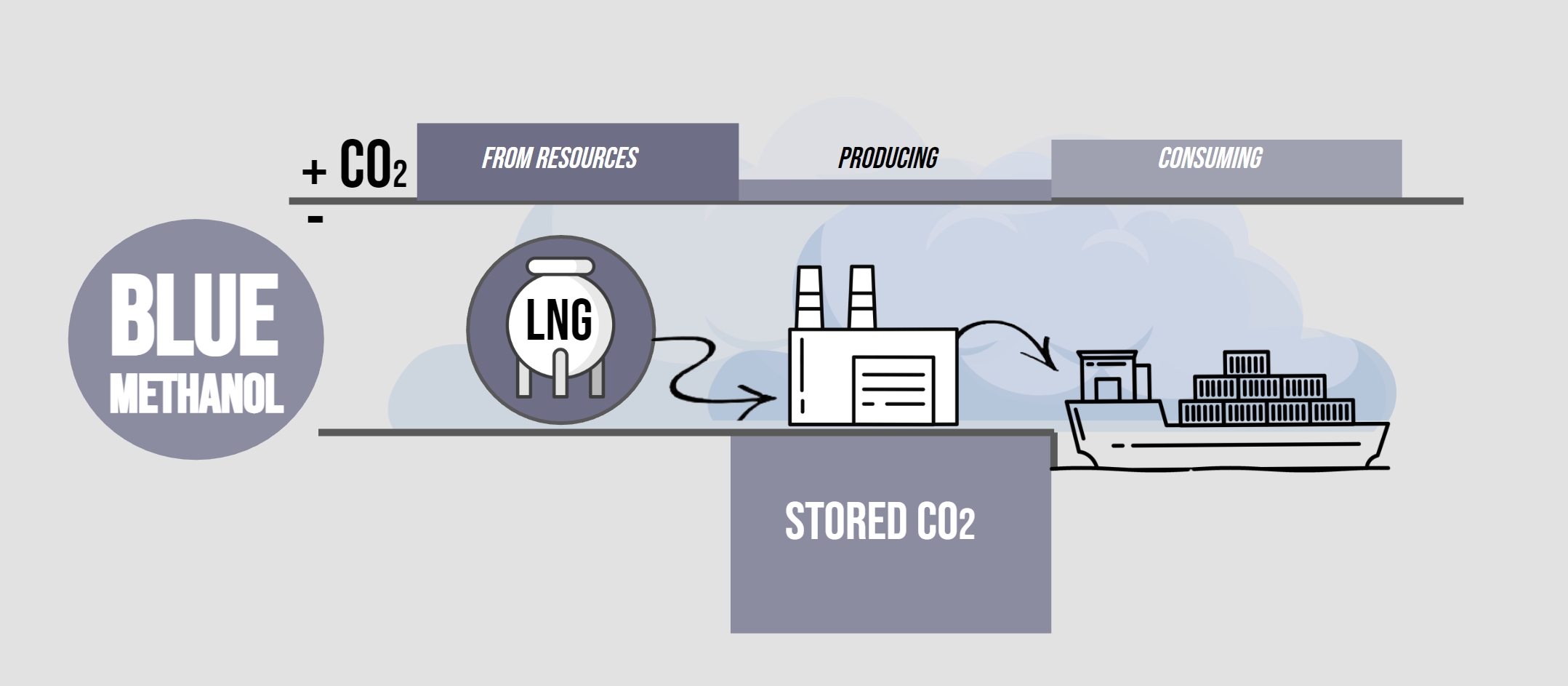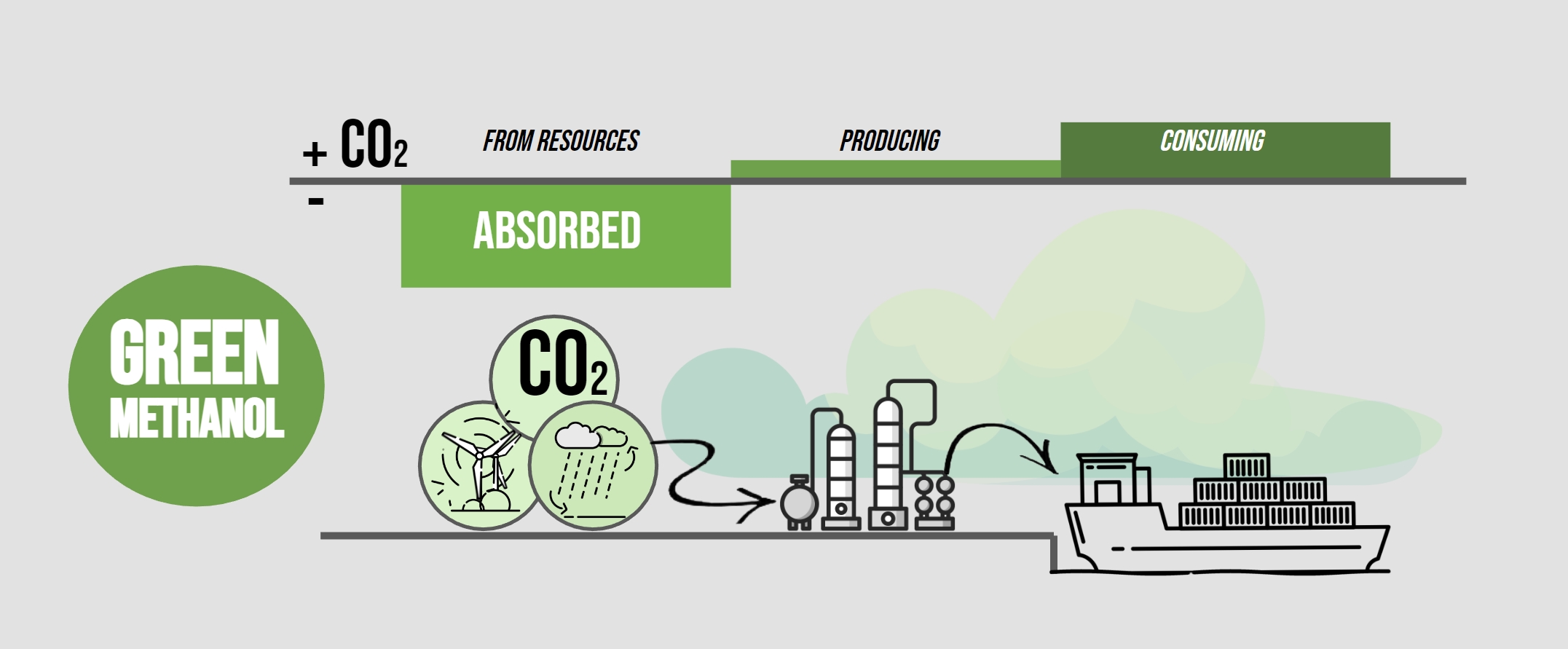2023/06/21
GREEN, GREEN, GREEN METHANOL
How to reduce 70% of CO2 emissions in transportation fuel.
In the production of Methanol, it is important to assess the environmental impact of our industry. To do so, we will determine whether a project that captures CO2 from a cogeneration plant, where the fuel is natural gas, can be classified as green.
Methanol is a liquid fuel that, when used for power generation, emits much less CO2 than a fossil fuel. So far, everything is quite clear.
The crucial aspect is to ensure that in the overall production of Methanol, we reduce the generated CO2, which is our objective, and utilize renewable energy sources in its creation.
This is where the categorization of Methanol by colors comes into play, determining how to classify a process as green.
The colors in the types of Methanol are based on the sources used for its production and the total amount of CO2 emitted during its creation.

Gray Methanol, image Copyright © 2023 Forestal del Atlantico,All rights reserved.
Gray Methanol: If the source is natural gas, we synthesize Methanol, resulting in the generation of approximately 1.5 to 1.8 tons of CO2 per ton of Methanol.

Blue Methanol, image Copyright © 2023 Forestal del Atlantico,All rights reserved.
Blue Methanol: As a variation of gray Methanol, in this case, we capture the CO2 emitted and store it.

Green Methanol, image Copyright © 2023 Forestal del Atlantico,All rights reserved.
Green Methanol: It is produced using clean energy sources in the process, and its use for transportation should reduce the Tank-to-Wake (TtW) emissions of greenhouse gases (GHGs) by at least 70%.
What the European Union says
The European Union defines whether a project is RFNBO (Renewable Fuel of Non-Biological Origin), meaning it is green, based on the following criteria:
2022 Directive on the use of energy from renewable sources.
2022 Criteria for emission reduction by 2030
a) The reduction of GHG (Greenhouse Gas) emissions in the use of fuel for transportation must be at least 90%.
Article 25, point 2.
b) The origin of the captured CO2 is not specified, and the Commission is entrusted with a delegated act to determine the requirements.
Article 28, point 5.
Regarding the origin of CO2, the requirements are clarified in a commission in February 2023 to determine the criteria for classifying a plant as green:
2023 Delegated regulation for a minimum threshold for GHG savings of recycled carbon fuels and annex.
2003 Annex I Directive 2003/87/EC of the European Parliament and of the Council.
CO2 emissions must be avoided.
It is considered green if the CO2 is captured and incorporated into the generated fuel (Metavol).
a) The CO2 from a cogeneration plant using natural gas falls within the activities considered for RFNBO generation.
Let's summarize what we know:
Blue Methanol is synthesized directly from natural gas to obtain Methanol.
Green Methanol is when the total emissions, including those from its production, are reduced by 90% when used for transportation.
Using natural gas in the CO2-capturing cogeneration plant is not directly related to Blue Methanol, which uses natural gas to convert it into Methanol.
Therefore, a Methanol production plant that captures CO2 from a cogeneration plant running on natural gas, which would otherwise be released into the atmosphere, and utilizes renewable energy sources for Methanol production, resulting in a total emissions reduction of 90%, qualifies as a Green Methanol plant. It is truly green.